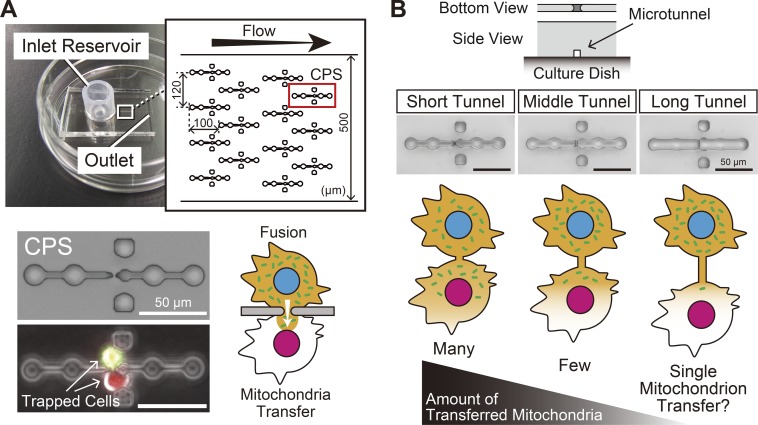Fig. 1.
Microfluidic device for mitochondria transfer between live single cells. (A) The microfluidic device used for mitochondria transfer (our previous microfluidic device). In the main microchannel, a total of 105 cell pairing structures (CPSs), which can trap single cells in a pairwise manner at the position of the microaperture (microslit), are arrayed. Cell fusion through a microslit produces a strictured cytoplasmic connection which allows migration of cytoplasmic components including mitochondria into the fusion partner. In the present study, the microslit was replaced with a microtunnel (see panel B). Data are from references (Wada et al., 2014, 2015). (B) Strategy for quantitative control of mitochondria transfer. Upper panels: newly fabricated CPSs, which have a short, middle or long tunnel instead of a microslit. Lower scheme: the concept of quantitative control of mitochondria transfer. We expected that cell fusion through a microtunnel of a different length would result in formation of a strictured cytoplasmic connection with an analogous length, and that a longer cytoplasmic connection would result in fewer mitochondria being transferred including single mitochondrion transfer.

